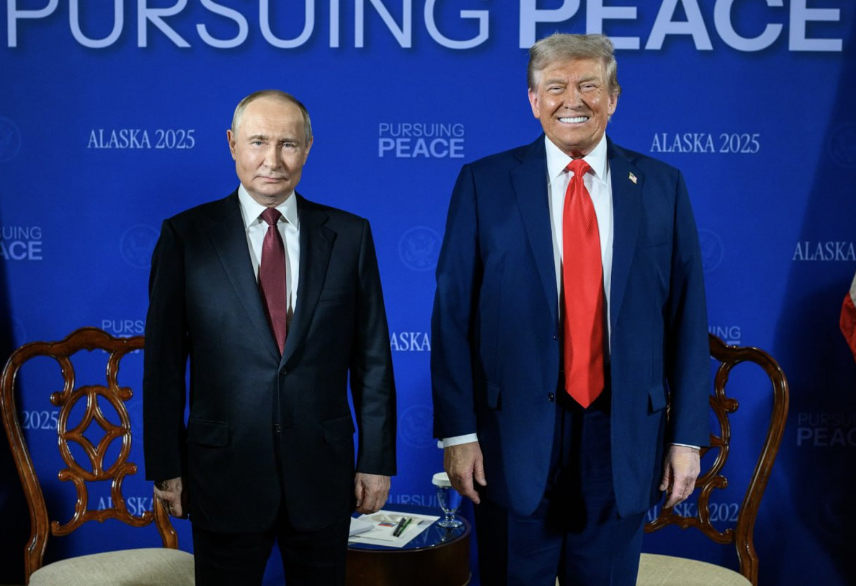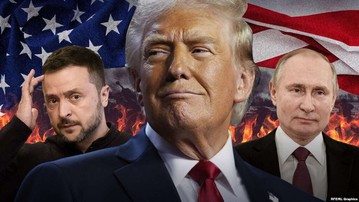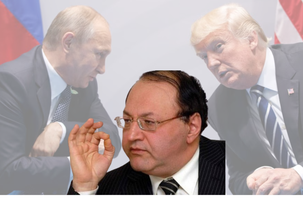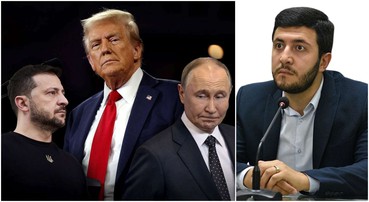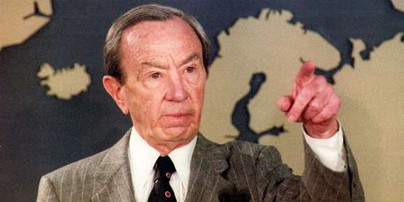The nearly three-hour summit between Donald Trump and Vladimir Putin in Alaska on August 15th was more profound than the two leaders’ vague statements.
The choice of location was telling: Alaska, a reminder of the historic ties between the United States and Russia, also symbolizes one of Russia’s greatest historical humiliations: the sale of territory to the United States in the 19th century. Trump’s choice of remote Alaska for the summit could also be seen as a means of psychological pressure, an attempt to demonstrate American supremacy not only in the realm of economics and politics but also in the realm of historical memory.
At the same time, Trump tried to play up the differences in the two countries’ military strengths during the summit. Trump’s Nazism continues to feed on his infallibility complex, another manifestation of which was the reference to Putin’s compliment that, especially under Trump’s presidency, the US has become a global superpower with a “hot as a cannon” economy and technological potential. In other words, Washington tried to subject Putin to a psychological attack with a show of force. However, if we consider the “results” of the meeting, the Kremlin appears to be the winner.
Russia’s tactical victory
Negotiating with Trump in Alaska, even in a somewhat humiliating environment, became an opportunity for Russia to return to the international agenda. Against the backdrop of negotiations without a concrete result, the summit was perceived not as a dialogue between a war-weary country and a superpower, but as a meeting of the leaders of the two states with the largest nuclear arsenals in the world, on whose broad geopolitical agenda, Ukraine is just another topic.
Thus, Trump unwittingly legitimized Putin’s aggressive, conquest-oriented policy, showing that Russia continues to be considered an equal partner, confirming this attitude with unnecessary compliments to the Russian leader.
And for the Kremlin, the main result was that Putin once again managed to avoid the sanctions that Trump had threatened even before the talks. Washington had announced that if there were no deal in Alaska, new restrictions would be imposed on both Russia and its oil partners. However, after the summit without a deal, Trump declared that there was no need to think about it for now, since the meeting had inspired optimism. As a result, Moscow received carte blanche to buy time, ease Western pressure, and achieve a new split in the Western camp.
“Nothing is agreed until everything is agreed with everyone.”
The summit did not end with any concrete agreement. The classic principle of diplomacy guides the parties: “nothing is agreed until everything is agreed.” In this case, one could also add “until it is agreed with everyone.” However, Trump announced in a briefing given to the American media after the negotiations that there had been some progress, as such, voicing the idea of “territorial exchange.” What this is about has not been officially clarified. But the context suggests that options related to the fate of Ukraine’s eastern regions were discussed.
Before the meeting, information was circulating that the possibility of completely ceding the Donetsk region to Russia and stopping at the current line of contact in other war zones was discussed. This is a specific step back in Russia’s position, which until now had demanded the surrender of all four eastern Ukrainian regions.
A possible compromise under discussion could also include excluding the prospect of Ukraine joining NATO with the activation of a system of other security guarantees for Kyiv.
However, Kiev had already stated before the summit that such a scenario was unacceptable: firstly, its territories cannot be a subject of bargaining, and besides, the complete surrender of Donetsk to Moscow would only become a new springboard for Russia’s further advancement. And the exclusion of Ukraine’s membership in NATO itself means that Kyiv will not receive security guarantees to protect itself from new aggression.
Ukraine—a possible new scapegoat
Immediately after the meeting, Trump had a telephone conversation with Ukrainian President Volodymyr Zelensky and several European leaders. What he conveyed and how he commented on the Alaska talks is not known. However, it can be assumed that Washington tried to present the Russian proposals as the basis for the negotiation process, in fact pushing Kiev towards “undesirable” or “lesser evil” concessions.
Suppose Ukraine and the EU reject this option. In that case, there is a risk that Washington will present it as a demarche of Kiev’s intransigence and failure of its peacemaking efforts, and will once again place the role of “culprit” on the Ukrainian side. Such a scenario would exclude American responsibility and allow the Trump administration to gradually “wash its hands” of the Ukrainian war, focusing on separate economic relations with Russia. Even before the Alaska meeting, Trump threatened that he might withdraw from the settlement of the Ukrainian conflict altogether.
In other words, Putin managed to smoothly move the ball back to the US-Ukraine, US-Europe plane, while at the same time receiving the “legitimate” right to continue the brutal war.
Thus, the Alaska summit showed that Moscow continues to use any opportunity to overcome international isolation, and Washington is ready to present even a spectacular failure of negotiations as its success. In these conditions, Ukraine remains the biggest risk-bearer, and Trump will attempt to convince it that he has found the best solution to the situation, one worthy of a Nobel Prize. Now let Europe deal with its fate.
Gor Abrahamyan




